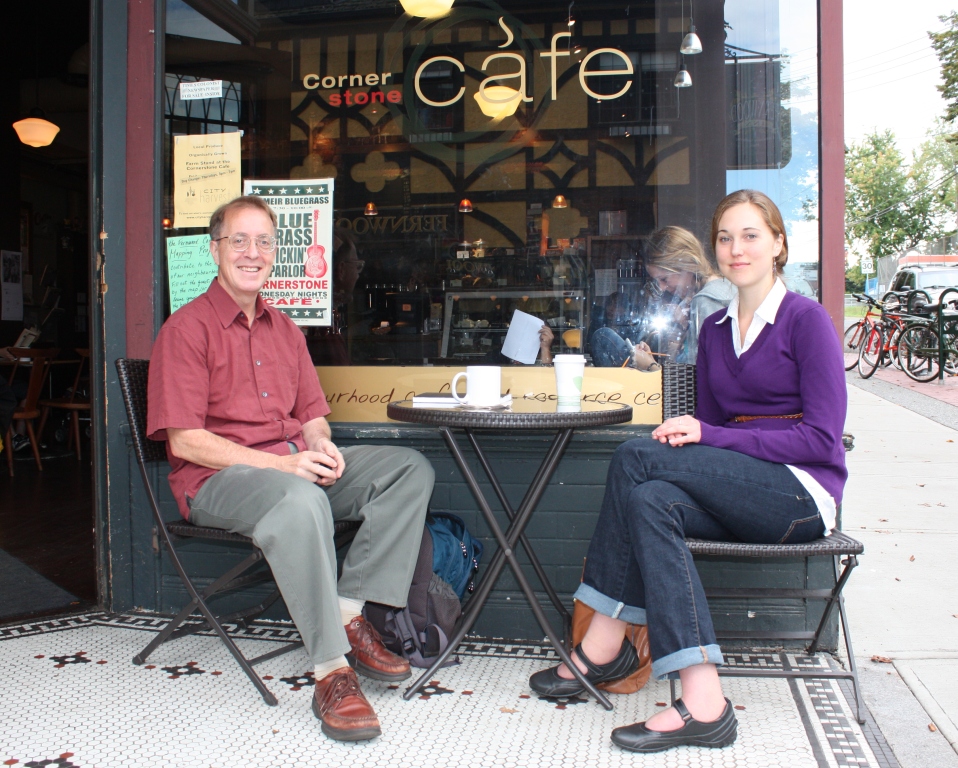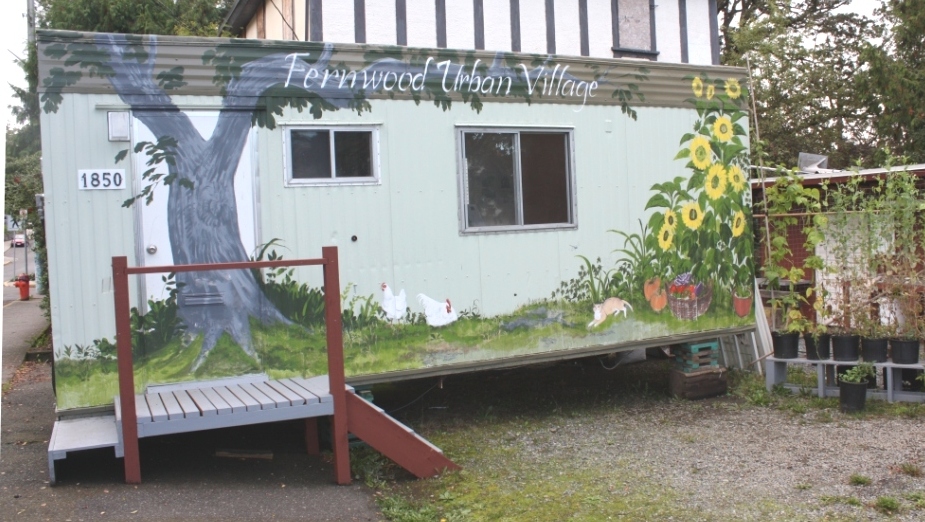Building community is hard work. So imagine you are living in a housing complex with 32 neighbours, people whom you care about, socially network, share resources, collaborate on decisions and tasks, practice sustainability, and just plain be in good relationship with. That’s what lies ahead for you if you become a member of the Fernwood Urban Village (FUV), a cohousing community currently forming in Victoria. Many people want to be part of that community, and the work!
A few days ago, I met with Kylie Sandham, Office Administrator for the FUV, over good coffee at the Cornerstone Cafe, in Fernwood. In addition to assisting with FUV paperwork, Kylie also coordinates and facilitates community meetings about the FUV. She generously shared the story of FUV to-date, easily answered my questions, and gave me a tour of the proposed property site. I really enjoyed chatting with her, and her knowledge of and passion for cohousing is evident. In this video, Kylie touches on FUV diversity, common facilities, and collaborative decision-making
Fernwood Urban Village
Cohousing is a collaborative, intentional community; a community designed to facilitate shared governance, social networking, sustainability and security. Cohousing is an alternative to the single family home, condominium or apartment.? The modern cohousing movement got its start 50 years ago in Denmark. Fernwood Urban Village (FUV) is a member of the Canadian Cohousing Network (www.cohousing.ca). There are currently only two cohousing communities on Vancouver Island, Pacific Gardens in Nanaimo, and Creekside Commons in Courtenay.
FUV currently has a re-zoning application before the City of Victoria. The application, which is being led by developer Bill Mckechnie, will merge four existing lots into a single development. A re-zoning decision is expected in early 2011. If given the ok, construction will follow.
FUV will consist of 32 studio, one and two bedroom strata units, and is adult-oriented (singles, couples, empty nesters). A small number of the units will be rental, and all units will be efficiently sized between 400 – 1000 sq ft. The FUV is located within easy walking distance of downtown Victoria. Needless to say, there is considerable, positive, community interest for the FUV.
Each cohousing community has its own principles and bylaws. Here’s the principles for how the FUV plans to operate:
- Cohousing; members understand and support cohousing and its values
- Participatory process; members participate in the social environment, management and decision making
- Intentional community design; community is built using a social contact design, a combo of private and social interaction
- Common facilities; e.g., kitchen, dining room, workshop, laundry, Ashiyu (a warm footbath room)
- Shared transportation; e.g., car share, bike share
- Energy efficiency; solar water heating
- Collaborative decision making; everybody sits on council (not just elected officers), note cohousing is administered under the Strata Act
- Equitable division of labour and participatory management; leveraging unique skills, interests of members
- Separate finances and individual ownership; financial and spatial independence
- Sustainability and permaculture; living with a lighter footprint
Not the first in Victoria
This is not the first crack at cohousing in Victoria. Cardiff Place in Victoria was the first cohousing community built in Canada, and which paved the way for those that followed. However, due to some internal issues, Cardiff ceased to operate as cohousing, and now is just a strata titled condominium. The challenge for Cardiff (and every cohousing community) is that community doesn’t just happen. It takes work, and when not everyone is aligned with the vision..
Have you been involved in a cohousing community? What’s your experience with it?
If you enjoyed this post, please consider leaving a comment or subscribing to my blog. Thanks, Ben.



Speak Your Mind